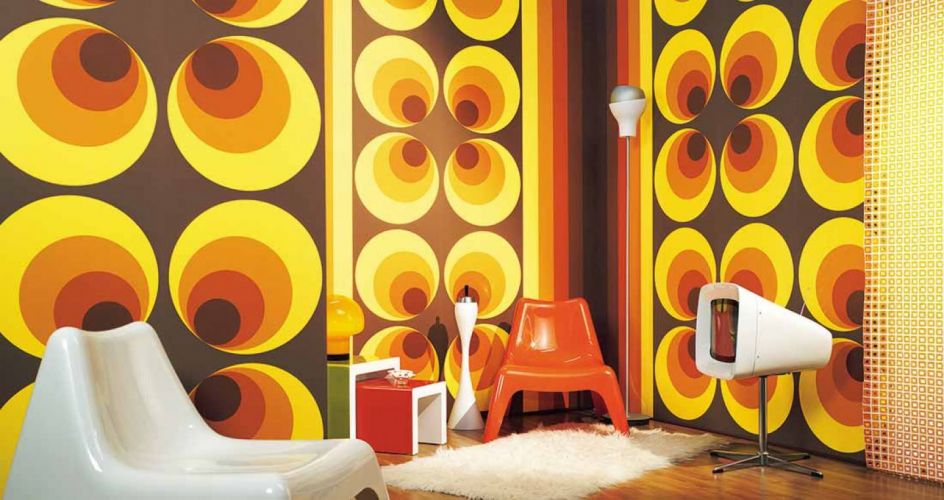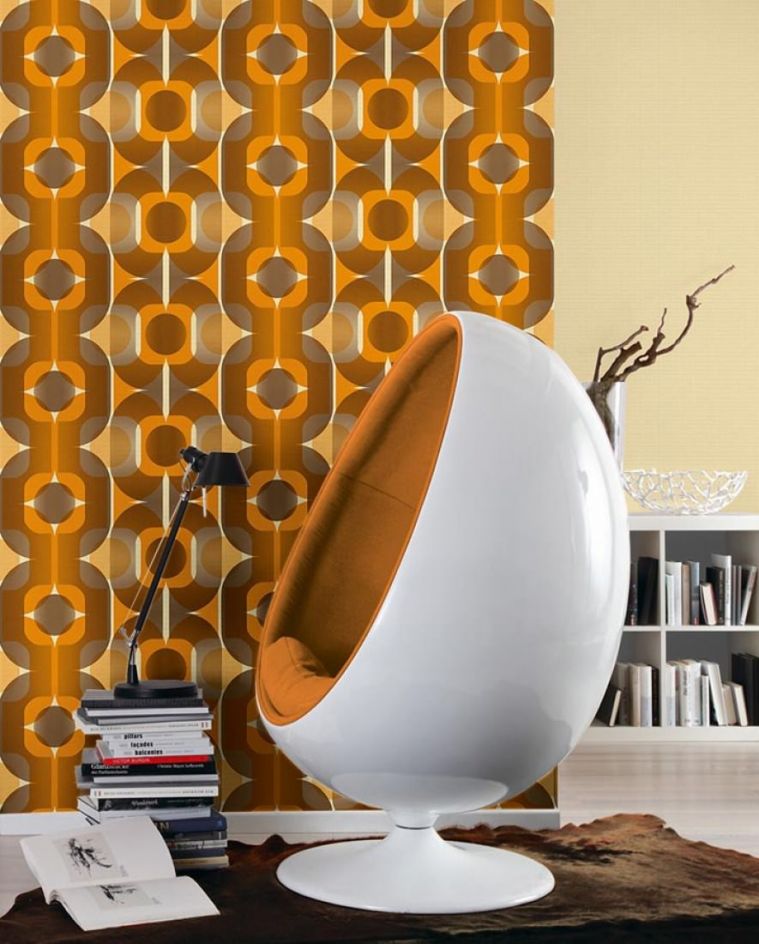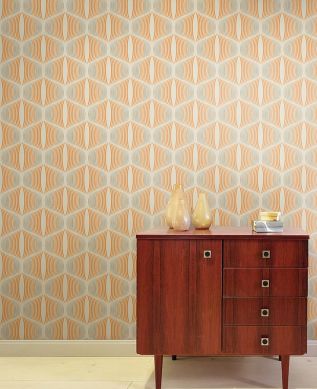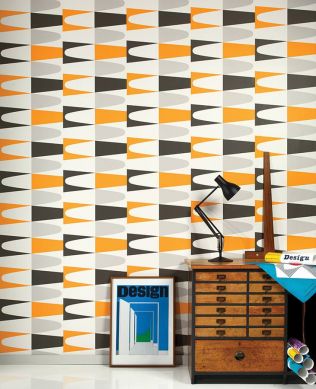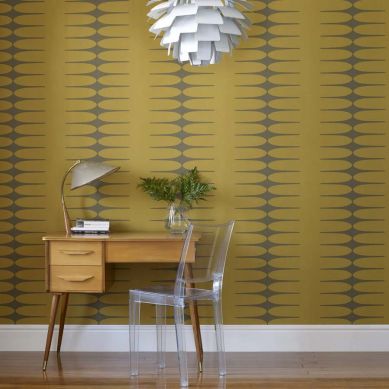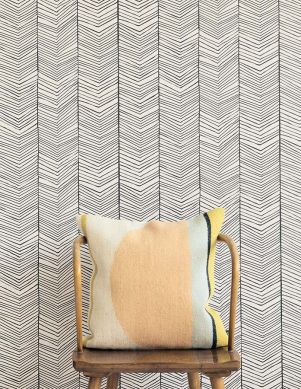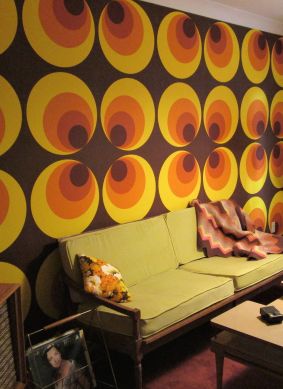Vintage wallpapers are not the same as retro wallpapers, and the differences become particularly apparent when attempting to put them up on your wall.
The term “Vintage” is used for furniture, clothing, jewellery, utensils, accessories, and pieces of art that are at least 10 - 20 and at most 90 years old. Vintage objects should be differentiated from antiques, which ought to be at least 100 years old. However, the term can be applied to objects as old as 800 B.C.
But let’s get back to vintage wallpapers, the true originals from eras and design epochs long gone, which are highly sought after amongst those who seek authentic wall décor. These wallpapers, for instance from the 50s, 60s and 70s, with their quirky and stylish patterns, are undoubtedly rare finds. Alas, they tend to be less than suitable for their originally intended purpose.
Retro describes something that is new but based on an original design – retro wallpapers, for instance, pick up typical patterns and colours of original wallpapers from a specific era. However, the manufacturing techniques are based on the latest standards, which has a hugely positive impact on the quality and meets today’s requirements.
So if you’re trying to decide whether to get a retro or a vintage wallpaper, we would recommend choosing a retro design, and we will explain the reasons in this blog.
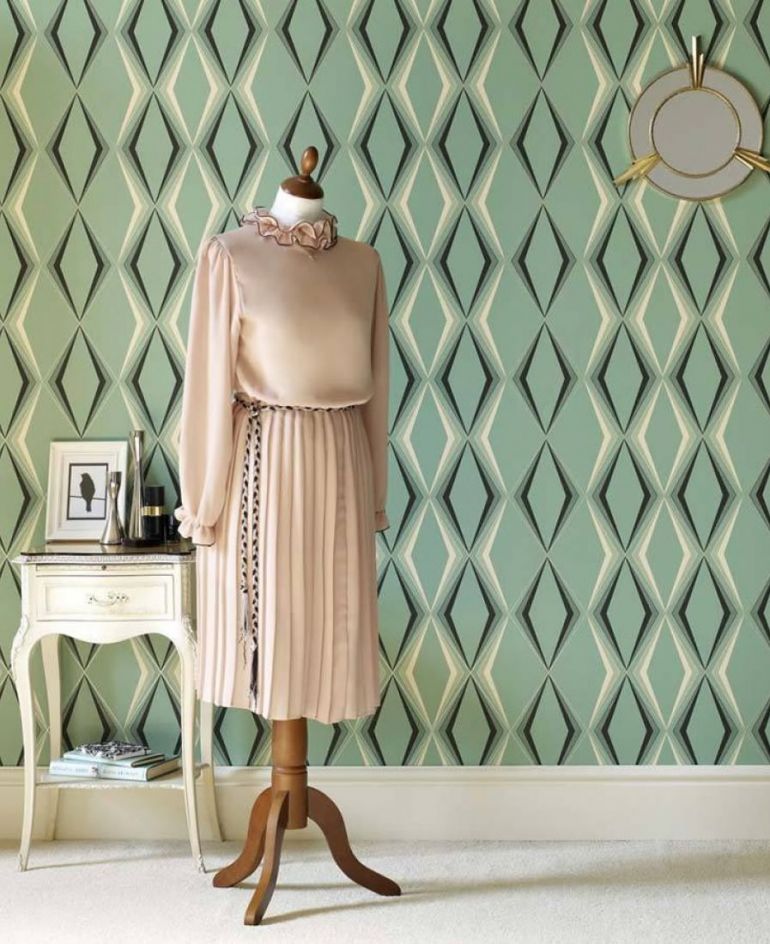
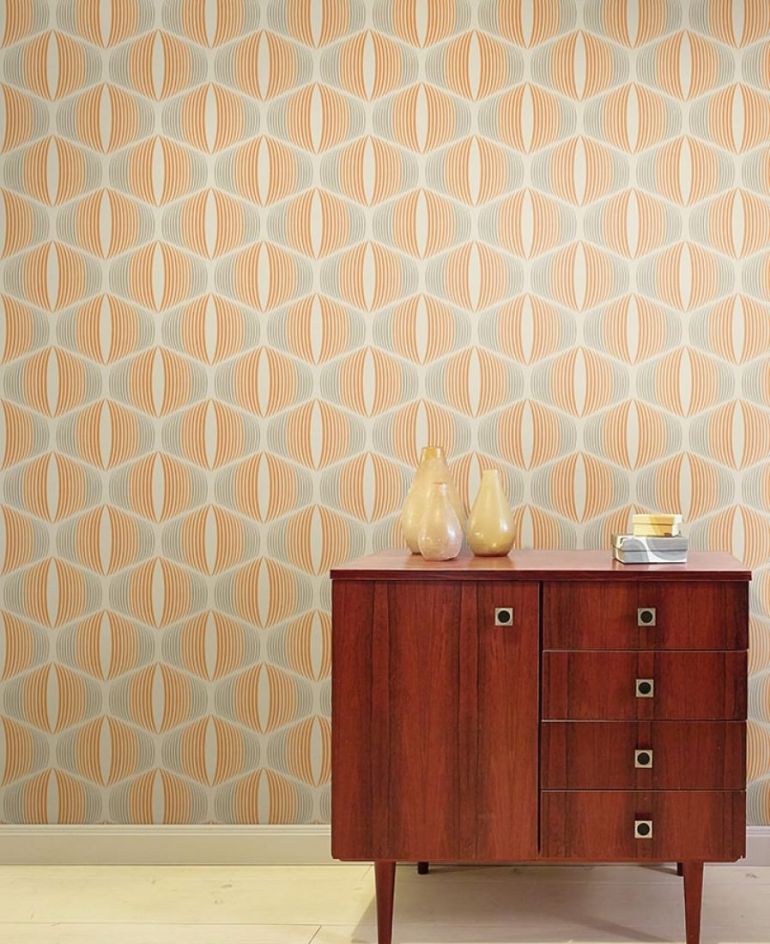
How Marketing often mistakes Retro for Vintage
First things first: in advertising and general parlance, the terms “vintage” and “retro” are often incorrectly used as equal or exchangeable terms. Firstly, vintage tends to appeal to emotions and memories more than retro, whilst the latter is also often associated with “imitation”. But in many areas of design, retro provides true advantages - after all, we live in the 21st century... not the 19th. Technological developments, and the comfort the mobile world offers, demand products that do these innovations justice.
Sign of the Times for Vintage Wallpapers
These days, original wallpapers from the 50s to the 70s are usually discovered completely by chance in basements or lofts. Sometimes a long-established shop might find some forgotten stock in a dusty corner. More often than not, the storage conditions have been less than ideal. Humidity, extreme fluctuations in temperature, dust and dirt have left their marks on the wallpaper rolls. Whether they were in their original packaging or exposed to the elements without any protection is almost insignificant.
The damage done by time and unsuitable storage conditions might not be visible at first sight, but once it is unrolled, the paper carrier material frequently shows mould spots, yellowing, dirt, rust blooms and other unsightly discolourations. These aren't just harming the visual appearance but the adhesive quality, too. Not to mention the hygienic and health aspect. Older wallpapers can also produce an unwelcome musky scent - not something anyone would like to introduce into their home.

Quality aspects of Vintage wallpapers
In past decades, printing and manufacturing processes for wallpapers have developed at break-neck speed - and with them, the quality of the product. Razor-sharp pattern motifs, brilliant deep colours, optimum adhesion and low weight are all results of modern wallpaper production. Retro wallpapers with unique patterns, structures and sculptural dimensions satisfy the desire for top quality as well as providing that unique nostalgic feeling.
Vintage wallpapers that are 20+ years old still have the power to impress with their patterns and motifs, but the colours tend to have faded and the adhesive strength is seriously impaired. In some cases, the vintage wallpaper will refuse steadfastly to stay on the wall, as the carrier material does not absorb any of the wallpaper paste or adhesive. At this point, it is worth mentioning that wallpaper paste and adhesives have also changed significantly in the last 20 years or so. Composition and substances have been altered significantly.
Authentic, old wallpapers also weigh considerably more, which is especially true for those made from synthetic materials or PVC. This means that hanging them requires more physical strength and time, and removing them takes much longer, too.

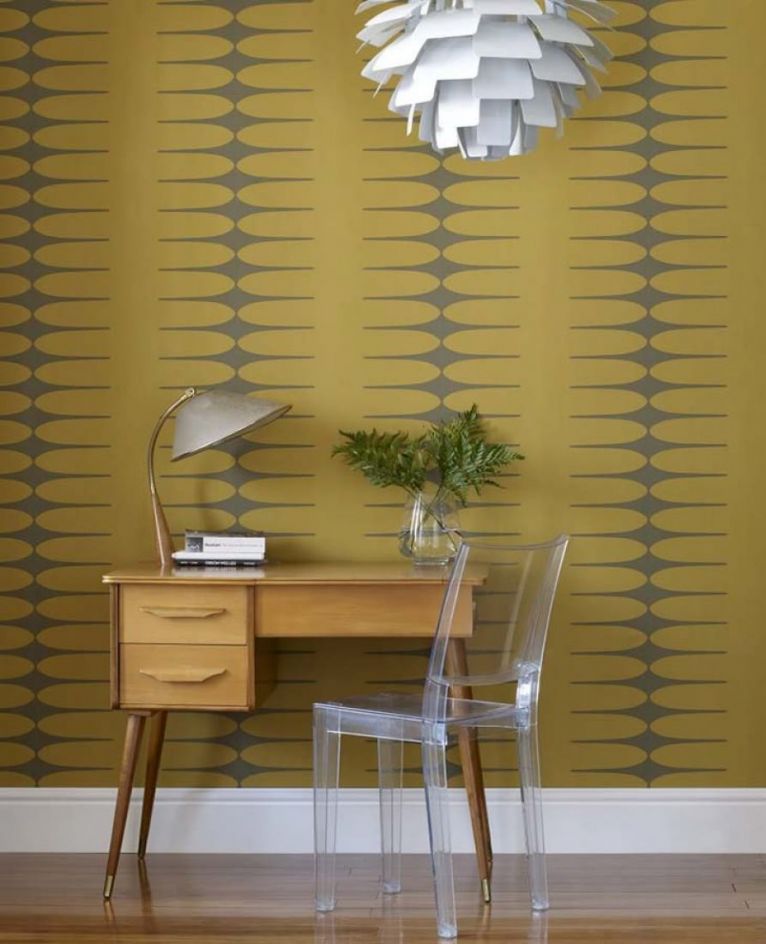
Issues with remaining vintage wallpaper stock
If you find a gorgeous retro wallpaper (for instance in the “Wallpaper from the 70s” shop!), you can rest assured that your requirements of wallpaper rolls are covered, and that you will most probably be able to re-order some at a later date if necessary (unless it it completely sold out, of course).
Choosing original, old wallpapers means that there is only a limited amount of rolls available, which is extremely restrictive in terms of what you can do with it. There is certainly no room for mistakes when it comes to cutting the wallpaper, as this might mean that you run out of the precious material.
Generally speaking, even if you are lucky enough to find an original wallpaper design, there is usually only a limited amount of rolls available (exceptions prove the rule) - especially if it is your ultimate dream design (of course!). Obviously, reordering is usually impossible as production was discontinued many years or even decades ago, and the manufacturer might not even exist any longer. As a result, using vintage wallpapers requires careful calculation, and it can all still go horribly wrong. Retro wallpapers are a perfect, headache-free alternative.

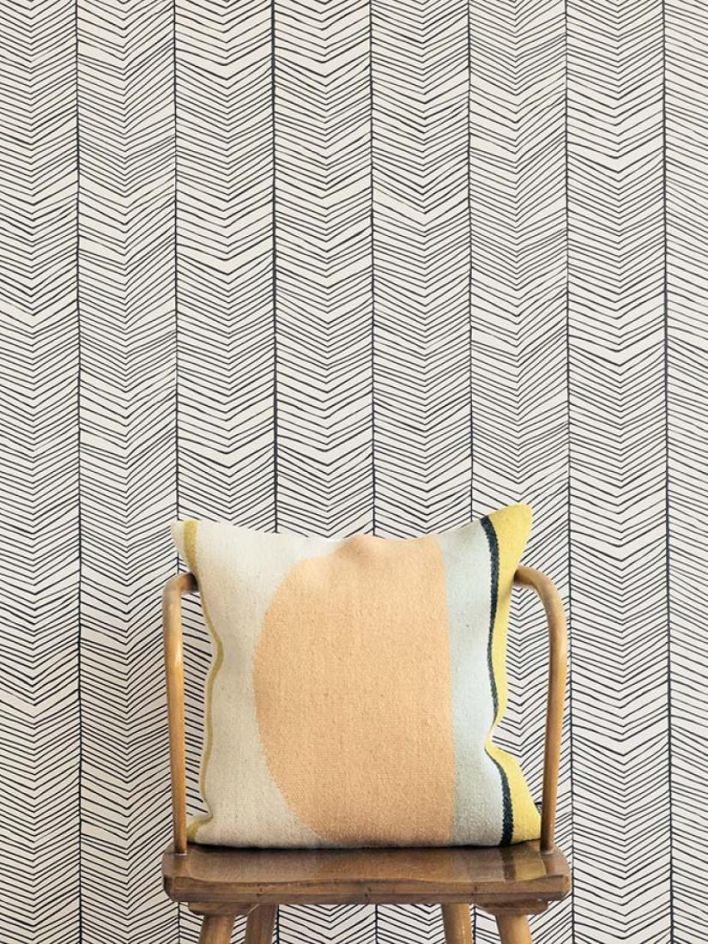
Our recommendations
We know all there is to know about vintage and retro wallpapers. After all, it was a discovery in a basement that triggered our own enthusiasm for patterned and designer wallpapers of days long gone, and these cult styles inspired us to come up with fresh new incarnations with the added advantages of modern day quality. They evoke emotions and memories, whilst simultaneously motivating us to find new directions to move towards a stylish and happy future.
Real, old originals are a treasure, no doubt, and they can serve as highly decorative interior design elements, as long as they are in perfect, flawless condition. However, in most cases they will have lost their adhesive quality which means that they can only be used to cover small areas. But how about using individual strips of wallpaper to create arty wall décor? The best way to do this is to attach/glue the strips to wooden planks and seal them, or to frame them and admire them protected behind glass.
For larger-scale wall treatments, new, modern wallpapers with retro designs are much more suitable, both in terms of visual appearance and optimum room climate. If all of the information above has convinced you that you simply need a vintage pattern in your house, then let us present our fantastic retro wallpapers which will enable you to evoke your favourite decade whilst also enjoying the latest quality characteristics.
